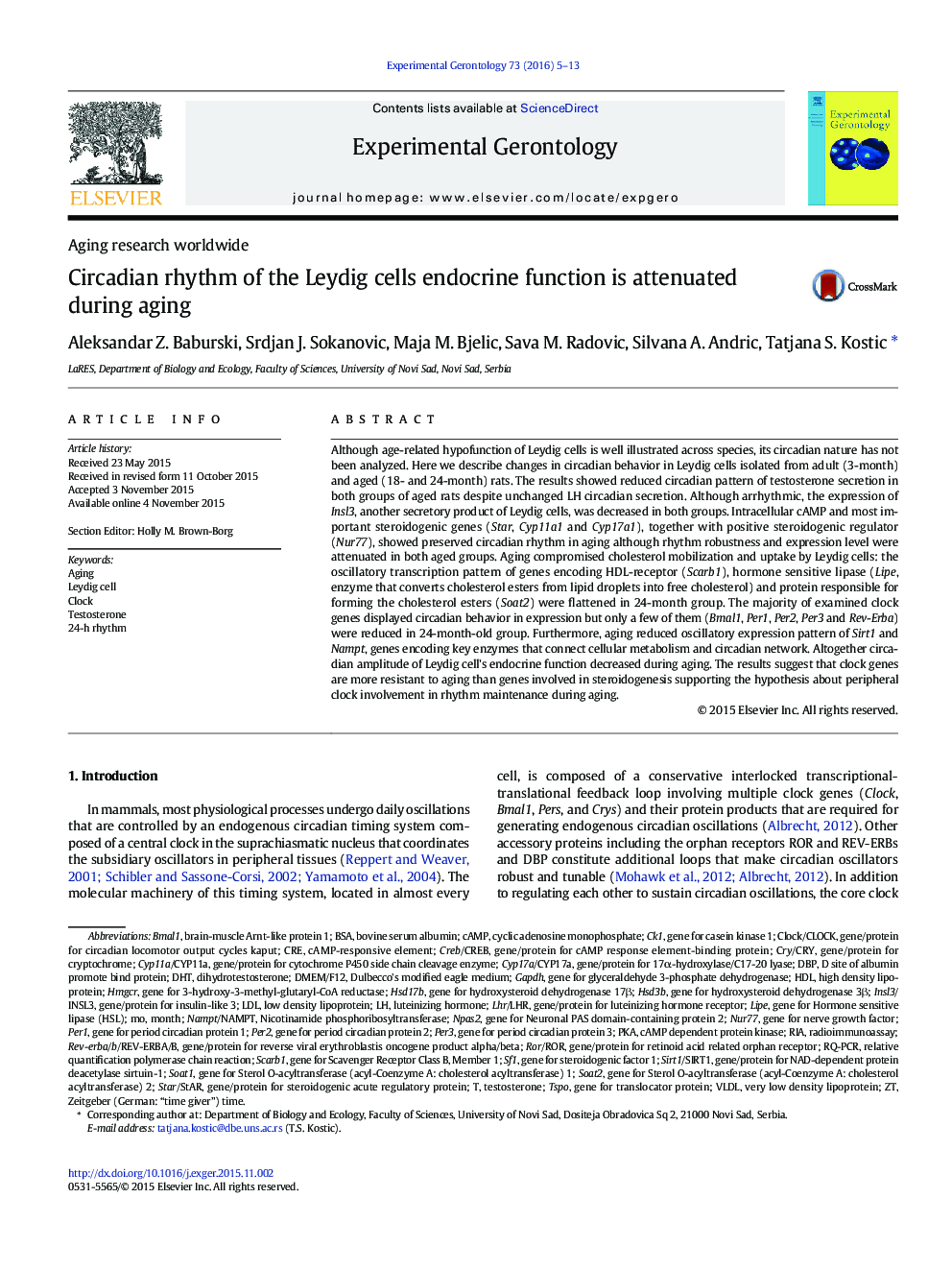| کد مقاله | کد نشریه | سال انتشار | مقاله انگلیسی | نسخه تمام متن |
|---|---|---|---|---|
| 1906157 | 1534868 | 2016 | 9 صفحه PDF | دانلود رایگان |

• Aging lowered circadian serum testosterone variations.
• Aging decline circadian expression of key steroidogenic and clock genes.
• Cholesterol metabolism and uptake are dampened in Leydig cells from aged rats.
• During aging the changes in steroidogenesis precede changes in clock network.
• Reduced circadian expression of Nampt/Sirt1 pointed decreased cellular metabolism.
Although age-related hypofunction of Leydig cells is well illustrated across species, its circadian nature has not been analyzed. Here we describe changes in circadian behavior in Leydig cells isolated from adult (3-month) and aged (18- and 24-month) rats. The results showed reduced circadian pattern of testosterone secretion in both groups of aged rats despite unchanged LH circadian secretion. Although arrhythmic, the expression of Insl3, another secretory product of Leydig cells, was decreased in both groups. Intracellular cAMP and most important steroidogenic genes (Star, Cyp11a1 and Cyp17a1), together with positive steroidogenic regulator (Nur77), showed preserved circadian rhythm in aging although rhythm robustness and expression level were attenuated in both aged groups. Aging compromised cholesterol mobilization and uptake by Leydig cells: the oscillatory transcription pattern of genes encoding HDL-receptor (Scarb1), hormone sensitive lipase (Lipe, enzyme that converts cholesterol esters from lipid droplets into free cholesterol) and protein responsible for forming the cholesterol esters (Soat2) were flattened in 24-month group. The majority of examined clock genes displayed circadian behavior in expression but only a few of them (Bmal1, Per1, Per2, Per3 and Rev-Erba) were reduced in 24-month-old group. Furthermore, aging reduced oscillatory expression pattern of Sirt1 and Nampt, genes encoding key enzymes that connect cellular metabolism and circadian network. Altogether circadian amplitude of Leydig cell's endocrine function decreased during aging. The results suggest that clock genes are more resistant to aging than genes involved in steroidogenesis supporting the hypothesis about peripheral clock involvement in rhythm maintenance during aging.
Journal: Experimental Gerontology - Volume 73, January 2016, Pages 5–13